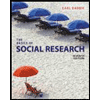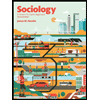HW6Solution_Fall23
pdf
keyboard_arrow_up
School
University of Illinois, Urbana Champaign *
*We aren’t endorsed by this school
Course
448
Subject
Sociology
Date
Jan 9, 2024
Type
Pages
18
Uploaded by TheWongLife2
Homework 6 Solutions. Fall 2023 Exercise 1 (a) Note I need to estimate a dispersion parameter to account for greater dispersion than expected for a Poisson distribution. When an overdispersed Poisson log-linear model for rings is fitted using all other predictors, the results are as follows. From the table with parameter estimates, I can see all predictors except length are significant in the model with p-values less than 0.05. Note although indicator variable (sex = F ) has p-value greater than 0.05, it should be kept in the model because indicator variable for sex = I is significant. Based on type 1 & type 3 analysis results, I can also tell which predictors are significant. Specifically type 1 analysis uses the amount of information additionally explained by the model when that term is added sequentially, & type 3 analysis is based on the amount of information lost if I drop that term from the model. 1tly, the type 3 table shows the same result that all predictors except length are significant with p-values less than 0.05. The table from type 1 analysis shows all are significant. Thus, I can conclude sex, diameter, height, whole_weight, meat_weight, gut_weight & shell_weight are likely related to an abalone’s age.
Criteria For Assessing Goodness Of Fit Criterion DF Value Value/DF Deviance 4167 1835.0737 0.4404 Scaled Deviance 4167 4167.0000 1.0000 Pearson Chi-Square 4167 1931.8737 0.4636 Scaled Pearson X2 4167 4386.8088 1.0527 Log Likelihood 124719.3088 Full Log Likelihood -9484.8726 AIC (smaller is better) 18989.7452 AICC (smaller is better) 18989.7980 BIC (smaller is better) 19053.1187 Analysis Of Maximum Likelihood Parameter Estimates Parameter DF Estimate Standard Error Wald 95% Confidence Limits Wald Chi-
Square Pr > ChiSq Intercept 1 1.4972 0.0306 1.4372 1.5572 2392.10 <.0001 sex F 1 -0.0089 0.0076 -0.0238 0.0061 1.36 0.2442 sex I 1 -0.1086 0.0095 -0.1273 -0.0899 129.69 <.0001 sex M 0 0.0000 0.0000 0.0000 0.0000 . . length 1 0.2795 0.1719 -0.0575 0.6165 2.64 0.1040
Analysis Of Maximum Likelihood Parameter Estimates Parameter DF Estimate Standard Error Wald 95% Confidence Limits Wald Chi-
Square Pr > ChiSq diameter 1 1.4416 0.2088 1.0323 1.8509 47.65 <.0001 height 1 1.0201 0.1149 0.7949 1.2454 78.80 <.0001 whole_weight 1 0.7455 0.0635 0.6210 0.8700 137.72 <.0001 meat_weight 1 -1.8116 0.0737 -1.9560 -1.6673 604.81 <.0001 gut_weight 1 -0.8893 0.1150 -1.1146 -0.6639 59.81 <.0001 shell_weight 1 0.5264 0.0964 0.3376 0.7153 29.84 <.0001 Scale 0 0.6636 0.0000 0.6636 0.6636 Note: The scale parameter was estimated by the square root of DEVIANCE/DOF. LR Statistics For Type 1 Analysis Source Deviance Num DF Den DF F Value Pr > F Chi-Square Pr > ChiSq Intercept 4139.3003 sex 3261.7861 2 4167 996.31 <.0001 1992.62 <.0001 length 2613.1519 1 4167 1472.89 <.0001 1472.89 <.0001 diameter 2536.7855 1 4167 173.41 <.0001 173.41 <.0001 height 2480.5560 1 4167 127.68 <.0001 127.68 <.0001 whole_weight 2470.3512 1 4167 23.17 <.0001 23.17 <.0001 meat_weight 1894.7813 1 4167 1306.98 <.0001 1306.98 <.0001 gut_weight 1848.2252 1 4167 105.72 <.0001 105.72 <.0001 shell_weight 1835.0737 1 4167 29.86 <.0001 29.86 <.0001 LR Statistics For Type 3 Analysis Source Num DF Den DF F Value Pr > F Chi-Square Pr > ChiSq sex 2 4167 69.07 <.0001 138.15 <.0001 length 1 4167 2.65 0.1038 2.65 0.1037 diameter 1 4167 47.46 <.0001 47.46 <.0001 height 1 4167 64.27 <.0001 64.27 <.0001 whole_weight 1 4167 135.06 <.0001 135.06 <.0001 meat_weight 1 4167 597.00 <.0001 597.00 <.0001 gut_weight 1 4167 59.76 <.0001 59.76 <.0001 shell_weight 1 4167 29.86 <.0001 29.86 <.0001
(b) As I saw from part (a), type 3 analysis shows that length is insignificant in the model with p-
value greater than 0.05. AIC from the full model is 18989.75. Now I re-fit the model without length & the result is as follows. Now all predictors are significant in type3 analysis with p-value less than 0.05 & AIC is 18988.91, which is smaller than the value from the full model. Thus, I decide to remove length, in other words, keep sex, diameter, height, whole_weight, meat_weight, gut_weight & shell_weight in the final model. Criteria For Assessing Goodness Of Fit Criterion DF Value Value/DF Deviance 4168 1836.2395 0.4406 Scaled Deviance 4168 4168.0000 1.0000 Pearson Chi-Square 4168 1932.0556 0.4635 Scaled Pearson X2 4168 4385.4888 1.0522 Log Likelihood 124668.7199 Full Log Likelihood -9485.4555 AIC (smaller is better) 18988.9110 AICC (smaller is better) 18988.9542 BIC (smaller is better) 19045.9471 Algorithm converged. Since the deviance has an approximate chi-square distribution with degrees of freedom= n - number effective model parameters, & the chi-square distribution has expected value equal to the number of parameters, an indication of no lack of fit is a Deviance much lower than the number of degrees of freedom, which is the case in this model fit (deviance = 1836.2395 & df= 4168). Analysis Of Maximum Likelihood Parameter Estimates Parameter DF Estimate Standard Error Wald 95% Confidence Limits Wald Chi-
Square Pr > ChiSq Intercept 1 1.5154 0.0285 1.4596 1.5712 2834.65 <.0001 sex F 1 -0.0089 0.0076 -0.0239 0.0060 1.37 0.2415 sex I 1 -0.1079 0.0095 -0.1266 -0.0892 128.11 <.0001 sex M 0 0.0000 0.0000 0.0000 0.0000 . . diameter 1 1.7409 0.0985 1.5478 1.9340 312.17 <.0001 height 1 1.0215 0.1148 0.7965 1.2464 79.18 <.0001 whole_weight 1 0.7443 0.0635 0.6197 0.8688 137.17 <.0001
Your preview ends here
Eager to read complete document? Join bartleby learn and gain access to the full version
- Access to all documents
- Unlimited textbook solutions
- 24/7 expert homework help
Analysis Of Maximum Likelihood Parameter Estimates Parameter DF Estimate Standard Error Wald 95% Confidence Limits Wald Chi-
Square Pr > ChiSq meat_weight 1 -1.8009 0.0734 -1.9447 -1.6571 602.31 <.0001 gut_weight 1 -0.8691 0.1143 -1.0932 -0.6450 57.77 <.0001 shell_weight 1 0.5237 0.0964 0.3348 0.7127 29.52 <.0001 Scale 0 0.6637 0.0000 0.6637 0.6637 Note: The scale parameter was estimated by the square root of DEVIANCE/DOF. LR Statistics For Type 1 Analysis Source Deviance Num DF Den DF F Value Pr > F Chi-Square Pr > ChiSq Intercept 4139.3003 sex 3261.7861 2 4168 995.92 <.0001 1991.83 <.0001 diameter 2547.7136 1 4168 1620.84 <.0001 1620.84 <.0001 height 2493.5982 1 4168 122.83 <.0001 122.83 <.0001 whole_weight 2478.1688 1 4168 35.02 <.0001 35.02 <.0001 meat_weight 1894.8180 1 4168 1324.12 <.0001 1324.12 <.0001 gut_weight 1849.2551 1 4168 103.42 <.0001 103.42 <.0001 shell_weight 1836.2395 1 4168 29.54 <.0001 29.54 <.0001 LR Statistics For Type 3 Analysis Source Num DF Den DF F Value Pr > F Chi-Square Pr > ChiSq sex 2 4168 68.22 <.0001 136.43 <.0001 diameter 1 4168 320.49 <.0001 320.49 <.0001 height 1 4168 64.56 <.0001 64.56 <.0001 whole_weight 1 4168 134.54 <.0001 134.54 <.0001 meat_weight 1 4168 594.38 <.0001 594.38 <.0001 gut_weight 1 4168 57.73 <.0001 57.73 <.0001 shell_weight 1 4168 29.54 <.0001 29.54 <.0001 (c) From residual plots against predicted values, I see some slight curvature & possible spread in the middle of the residuals. The model does appear to over-predict for some of the smaller prediction values. All in all, the deviations in the residuals don
’
t look too bad, so issues with the model assumptions are minor. The parameter estimates are 1.74, 1.02, 0.74, -1.8, -0.87 & 0.52 for diameter, height, whole_weight, meat_weight, gut_weight & shell_weight, respectively. Also -0.0089 & -0.1079 for Sex = F & Sex = I. It implies for diameter, expected increase in log rings for a 1-unit increase
in diameter is 1.74 (Multiplicative increase of e^1.74 in count). I can interpret for other predictors having positive estimates (height, whole_weight & shell_weight) in the same way. Now for meat_weight which has negative estimates, -1.8, I can interpret the expected decrease in log rings for a 1-unit increase in meat_weight is -1.8, consequently the expected rings would decrease by a multiplicative factor of e^-1.8. I can interpret the estimate from gut_weight in the same way & conclude 2 have negative relationship with the count of rings. For sex variable, the expected decrease in log (rings) by changing sex = M to sex = F is -0.0089 & to sex = I is -
0.1079. Consequently, the expected count would decrease by a multiplicative factor of e^-
0.0089 & e^-0.1079. The decrease for male to female is insignificant, but the decrease from male to infant is significant. The diagnostic plots don
’
t look too bad, thus the model seems acceptable. Exercise 2 (a) I can see all predictors are significant in a gamma model with p-values less than 0.05. Type 1 & type 3 analyses give the same result. Thus, I can say sex, length, diameter, height, whole_weight, meat_weight, gut_weight & shell_weight are likely related to an abalone’s age.
Criteria For Assessing Goodness Of Fit Criterion DF Value Value/DF Deviance 4167 174.9773 0.0420 Scaled Deviance 4167 4205.9571 1.0093 Pearson Chi-Square 4167 188.6534 0.0453 Scaled Pearson X2 4167 4534.6922 1.0882 Log Likelihood -8695.4689 Full Log Likelihood -8695.4689 AIC (smaller is better) 17412.9378 AICC (smaller is better) 17413.0012 BIC (smaller is better) 17482.6487
Analysis Of Maximum Likelihood Parameter Estimates Parameter DF Estimate Standard Error Wald 95% Confidence Limits Wald Chi-
Square Pr > ChiSq Intercept 1 1.3932 0.0275 1.3394 1.4470 2574.06 <.0001 sex F 1 -0.0067 0.0077 -0.0219 0.0085 0.75 0.3869 sex I 1 -0.1036 0.0088 -0.1208 -0.0863 138.15 <.0001 sex M 0 0.0000 0.0000 0.0000 0.0000 . . length 1 0.3821 0.1702 0.0485 0.7157 5.04 0.0248 diameter 1 1.3949 0.2096 0.9841 1.8057 44.28 <.0001 height 1 1.6742 0.1867 1.3084 2.0401 80.44 <.0001 whole_weight 1 0.6555 0.0660 0.5262 0.7849 98.63 <.0001 meat_weight 1 -1.7064 0.0728 -1.8491 -1.5638 549.67 <.0001 gut_weight 1 -0.9218 0.1194 -1.1558 -0.6878 59.61 <.0001 shell_weight 1 0.5968 0.1045 0.3920 0.8016 32.62 <.0001 Scale 1 24.0372 0.5224 23.0348 25.0831 Note: The scale parameter was estimated by maximum likelihood. LR Statistics For Type 1 Analysis Source 2*LogLikelihood DF Chi-Square Pr > ChiSq Intercept -21086.743 sex -20034.343 2 1052.40 <.0001 length -18844.981 1 1189.36 <.0001 diameter -18723.565 1 121.42 <.0001 height -18561.632 1 161.93 <.0001 whole_weight -18482.130 1 79.50 <.0001 meat_weight -17524.913 1 957.22 <.0001 gut_weight -17423.562 1 101.35 <.0001 shell_weight -17390.938 1 32.62 <.0001 LR Statistics For Type 3 Analysis Source DF Chi-Square Pr > ChiSq sex 2 148.16 <.0001 length 1 5.03 0.0250 diameter 1 44.22 <.0001 height 1 92.21 <.0001 whole_weight 1 97.88 <.0001
Your preview ends here
Eager to read complete document? Join bartleby learn and gain access to the full version
- Access to all documents
- Unlimited textbook solutions
- 24/7 expert homework help
LR Statistics For Type 3 Analysis Source DF Chi-Square Pr > ChiSq meat_weight 1 511.84 <.0001 gut_weight 1 59.04 <.0001 shell_weight 1 32.62 <.0001 (b) As I checked in part (a), all terms are significant in type3 analysis. Thus, all predictors should be kept in the model. (c) From residual plots against predicted values, I can find a very clear quadratic pattern. Pearson & deviance residuals should remove any trends in the residuals if the chosen model & link are reasonable, thus there is a strong indication of problems with model assumption. Either I should choose a distribution with smaller variance function (Gamma has a variance proportional to the expected values squared, so perhaps linear relationship would be better) or a different link function should be considered. In terms of parameter estimates, meat_weight, gut_weight & sex dummy variables (sex = F, sex = I) have negative relationships with log (rings). The estimates are -1.71, -0.92, -0.0067 & -
0.1036, respectively. It implies for a 1-unit increase in meat_weight & gut_weight, I expect a multiplicative change in rings of e^(-1.71) & e(^-0.92). Also, by changing sex = M to sex = F or sex = I, I expect a multiplicative change in rings of e^(-0.0067) & e(^-0.1036). Indeed, all are less than 1, thus it means number of rings will decrease. Otherwise for predictors which have positive estimates, a 1-unit increase in those terms gives an increase in the number of rings. Specifically, length, diameter, height, whole_weight & shell_weight are positively related to log of rings with estimates 0.38, 1.39, 1.67, 0.66 & 0.6, respectively. To interpret it, for length, I expect a multiplicative increase in rings of e^0.38 for a 1-unit increase in length. I can interpret diameter, height, whole_weight & shell_weight in a similar way. Despite the fact I have a lower AIC value (17412.93) & a much lower deviance (
174.9773)
than the corresponding degrees of freedom (4167)
for the gamma model, I could find some issues on diagnostic plots, thus it
’
s not a good model & I can conclude Poisson model is better. In particular, the apparent curvature & non-constant variation which appeared to be slight in the Poisson model is much more pronounced in the gamma model. Therefore, I should choose the overdispersed Poisson model from exercise 1 as the better model.
Exercise 3 a) The principal component analysis of the data follows. To retain 85% of the variation, 4 components would be needed. This agrees with the average eigenvalue as the 4th principal component is the last with an eigenvalue of at least 1. It also agrees with the scree plot. In the scree plot, the elbow appears to be at 5, so 4 components would be chosen based on that criterion as well. 0
10
20
30
40
Predicted Value
-6
-4
-2
0
2
4
6
Standardized Pearson Residual
0
10
20
30
40
Predicted Value
-7.5
-5.0
-2.5
0.0
2.5
5.0
Standardized Deviance Residual
Eigenvalues of the Correlation Matrix Eigenvalue Difference Proportion Cumulative 1 6.7641797
8 4.851175
70 0.5637 0.5637 2 1.9130040
8 0.413120
38 0.1594 0.7231 3 1.4998837
0 0.435287
92 0.1250 0.8481 4 1.0645957
7 0.757839
34 0.0887 0.9368 5 0.3067564
3 0.067946
71 0.0256 0.9624 6 0.2388097
2 0.137079
48 0.0199 0.9823 7 0.1017302
5 0.057909
59 0.0085 0.9907 8 0.0438206
6 0.017044
49 0.0037 0.9944 9 0.0267761
7 0.004032
47 0.0022 0.9966 10 0.0227437
0 0.008685
71 0.0019 0.9985 11 0.0140579
9 0.010416
23 0.0012 0.9997 12 0.0036417
6 0.0003 1.0000
Your preview ends here
Eager to read complete document? Join bartleby learn and gain access to the full version
- Access to all documents
- Unlimited textbook solutions
- 24/7 expert homework help
Eigenvectors Prin1 Prin2 Prin3 Prin4 Prin5 Prin6 compactness 0.3131
56 -
.22530
4 -
.08794
6 -
.07265
6 0.6825
34 0.5607
86 circularity 0.3526
62 0.0789
70 -
.10537
6 -
.12117
3 -
.44824
7 0.3801
70 radiusRatio 0.3159
70 -
.08129
4 0.4297
05 0.0093
60 0.0555
96 -
.22150
1 prAxisAspectRatio 0.1205
20 0.1478
44 0.7500
33 -
.06055
3 -
.05489
9 0.0187
53 scatterRatio 0.3707
32 -
.00262
2 -
.17141
1 0.0821
71 0.0401
89 -
.24158
0 elongatedness -
.37043
9 0.0695
23 0.0745
99 -
.02793
2 0.0218
59 0.3640
35 prAxisRectangularity 0.3639
85 0.0170
10 -
.20830
3 0.0983
59 0.0539
93 -
.20878
2 scaledVarianceAlongMajorAxis 0.3653
52 0.1331
40 0.0578
26 0.0957
37 0.1921
55 -
.18450
5 scaledRadiusOfGyration 0.3451
73 0.1560
62 -
.10381
5 -
.15315
4 -
.44942
8 0.3243
36 skewnessAboutMajorAxis 0.0070
85 0.6844
76 0.1840
28 0.0582
33 0.2171
46 0.2115
14 kurtosisAboutMajorAxis 0.0101
82 -
.01590
9 0.0224
27 0.9606
31 -
.11876
9 0.2006
14 hollowsRatio 0.0571
66 -
.63131
9 0.3273
21 0.0158
78 -
.14812
3 0.1813
37
Eigenvectors Prin7 Prin8 Prin9 Prin10 Prin11 Prin12 compactness -
.18642
0 -
.11024
2 -
.09116
5 0.0089
93 -
.04921
5 -
.01023
3 circularity -
.13021
4 0.5136
61 -
.20429
2 -
.41707
8 0.0175
57 -
.03673
7 radiusRatio -
.35682
8 -
.03880
4 0.3480
87 -
.20266
2 0.6046
47 0.0008
08 prAxisAspectRatio -
.22342
3 0.0428
15 -
.24113
3 0.2534
81 -
.46862
2 0.0167
31 scatterRatio 0.0291
57 0.1372
04 -
.09441
8 0.2007
84 -
.01918
6 0.8349
66 elongatedness -
.10972
0 0.4209
80 0.6503
80 0.2076
28 -
.06119
2 0.2438
99 prAxisRectangularity -
.01601
2 0.4081
82 0.0740
09 0.6026
05 0.0539
01 -
.47882
3 scaledVarianceAlongMajorAxis 0.4017
02 0.0304
58 0.4607
02 -
.40709
7 -
.46337
2 -
.10167
3 scaledRadiusOfGyration 0.0416
10 -
.57894
1 0.3003
93 0.2961
39 -
.00939
6 0.0126
82 skewnessAboutMajorAxis 0.4491
54 0.0608
01 -
.17108
1 0.0643
27 0.4031
34 0.0305
71 kurtosisAboutMajorAxis -
.11598
8 -
.08254
4 -
.01893
7 -
.02501
4 -
.02507
2 -
.00983
3 hollowsRatio 0.6161
29 0.1067
16 -
.03389
7 0.1260
70 0.1646
16 0.0284
46
Variance Explained
0.0
0.2
0.4
0.6
0.8
1.0
Proportion
2
4
6
8
10
12
Principal Component
Proportion
Cumulative
Scree Plot
0
2
4
6
Eigenvalue
2
4
6
8
10
12
Principal Component
Your preview ends here
Eager to read complete document? Join bartleby learn and gain access to the full version
- Access to all documents
- Unlimited textbook solutions
- 24/7 expert homework help
b) For the 1st principal component, elongatedness has the only negative value. The largest positive values include circular & rectangular shape related features (Compactness, radius ratio, scatter ratio, principal axis rectangularity, scaled variance along major axis, & scaled radius of gyration). This feature seems to contrast elongation with the other listed shape measures. A silhouette with a smaller or more negative principal component 1 will tend to be more elongated relative to the other shape measures than the typical vehicle silhouette. A larger positive value would tend to indicate a larger amount of some subset of those shape features relative to elongation than the typical silhouette. The 2nd component has many small but potentially noticeable contributors with coefficient magnitudes around 0.15 or 0.2. These are big enough to have noticeable impacts in some cases, but mostly the principal component is picking up on a contrast between skewness about the major axis & hollows ratio. Silhouettes with a more positive principal component 2 will tend to have greater skewness about the major axis relative to the ratio of hollows than the typical silhouette. Those with a more negative value will tend to have a higher hollows ratio relative to skewness as compared to the typical silhouette. c) The score plot shows a couple of buses which are slightly higher in principal component 1 than the rest. These bus silhouettes might be more circular, rectangular, or compact & less elongated than other silhouettes. There
’
s also a bus & a van with much higher principal component 2. These 2 vehicle silhouettes most likely have a higher contrast of major axis skewness to hollows ratio than a typical vehicle silhouette, with greater skewness &/or smaller hollows ratios than is typical. Looking at the plot overall, the vehicles seem to be pretty mixed up. These 2 components wouldn
’
t be very useful for separating the 4 vehicle silhouette types. van
van
saab
van
bus
bus
bus
van
van
saab
van
saab
bus
van
bus
opel
van
bus
saab
opel
bus
van
bus
bus
saab
van
saab
saab
bus
saab
van
saab
opel
opel
opel
van
bus
van
saab
bus
opel
van
van
saab
saab
van
van
bus
van
saab
saab
saab
opel
bus
bus
van
saab
van
opel
van
opel
opel van
bus
bus
opel
bus
opel
van
bus
opel
opel
opel
opel
van
opel
saab
saab
bus
bus
bus
bus
van
opel
bus
bus
van
van
bus
opel
saab
opel
saab
van
-8
-6
-4
-2
0
2
4
6
8
Component 1 (56.37%)
-2
0
2
4
6
Component 2 (15.94%)
Component Scores
Exercise 4 a) Repeating the principal component analysis using a covariance matrix, the total variation is 5447 & the average eigenvalue would be 5447 / 12 which is about 454. 2 components would be needed to retain at least 85% of the variation, & 1st 2 components are also the only 2 with an eigenvalue greater than the average. The scree plot also suggests 2 as a good choice for the number of principal components. Cases could also be made for 1 component or 4 components given the large drop from the 1st to the 2nd eigenvalue & the drop off from 4 to 5, but the variation described by components 3 & 4 are pretty small so more than 2 components is more than needed. 2 will be a good choice based on all criteria here. Total Variance 5447.02070
46 Eigenvalues of the Covariance Matrix Eigenvalue Difference Proportion Cumulative 1 4300.0703
4 3680.224
78 0.7894 0.7894 2 619.84556 377.6803
4 0.1138 0.9032 3 242.16522 64.63518 0.0445 0.9477 4 177.53005 129.5533
1 0.0326 0.9803 5 47.97674 19.62957 0.0088 0.9891 6 28.34716 11.50360 0.0052 0.9943 7 16.84356 9.55712 0.0031 0.9974 8 7.28644 4.37464 0.0013 0.9987 9 2.91180 0.50232 0.0005 0.9993 10 2.40948 0.85688 0.0004 0.9997 11 1.55260 1.47084 0.0003 1.0000 12 0.08176 0.0000 1.0000
Eigenvectors Prin1 Prin2 Prin3 Prin4 Prin5 Prin6 compactness 0.0942
24 -
.00676
1 -
.14969
1 -
.14911
5 -
.20643
5 0.4537
25 circularity 0.0886
99 -
.06984
6 0.0592
20 -
.08265
7 0.0377
15 0.0005
67 radiusRatio 0.4819
67 0.7611
84 0.0933
92 -
.18443
2 0.0362
53 -
.20723
5 prAxisAspectRatio 0.0612
72 0.2959
38 0.3186
92 0.1379
70 0.0371
94 -
.03163
4 scatterRatio 0.4855
68 -
.27852
9 -
.54725
4 -
.05612
4 -
.00173
9 -
.43666
4 elongatedness -
.11501
4 0.0254
15 0.1148
99 0.0615
47 0.0317
58 0.0773
84 prAxisRectangularity 0.0369
91 -
.02627
3 -
.04378
6 -
.00051
6 0.0039
20 -
.03882
7 scaledVarianceAlongMajorAxis 0.5030
41 -
.01845
1 -
.14651
2 0.5860
43 -
.18249
5 0.4557
58 scaledRadiusOfGyration 0.4933
58 -
.46893
3 0.5999
01 -
.33125
8 0.1787
73 0.0946
88 skewnessAboutMajorAxis 0.0144
60 -
.03876
9 0.3423
90 0.5657
98 -
.01407
9 -
.13742
7 kurtosisAboutMajorAxis 0.0035
05 0.0272
38 -
.18033
4 0.1889
20 0.9366
75 0.1176
53 hollowsRatio 0.0126
84 0.1633
92 -
.13451
5 -
.31929
2 0.0970
33 0.5500
96
Your preview ends here
Eager to read complete document? Join bartleby learn and gain access to the full version
- Access to all documents
- Unlimited textbook solutions
- 24/7 expert homework help
Eigenvectors Prin7 Prin8 Prin9 Prin10 Prin11 Prin12 compactness 0.8170
84 0.0373
76 -
.08780
5 -
.13723
1 -
.04884
3 -
.00038
1 circularity 0.0607
73 0.1822
57 0.8101
91 0.1125
55 -
.51903
7 -
.01017
1 radiusRatio 0.1000
33 -
.24341
2 0.0059
73 0.1788
90 -
.00323
5 -
.00206
9 prAxisAspectRatio -
.01828
5 0.6516
03 0.0014
66 -
.59415
6 0.0876
73 0.0071
53 scatterRatio 0.0772
77 0.3636
48 -
.00623
1 0.0536
96 0.2069
13 -
.09686
4 elongatedness 0.1365
90 -
.07081
7 0.5169
68 0.1119
68 0.8067
30 -
.08866
2 prAxisRectangularity 0.0237
60 0.0257
72 0.0535
11 0.0216
97 0.0858
26 0.9912
48 scaledVarianceAlongMajorAxis -
.28011
9 -
.18629
5 0.1011
07 -
.13139
9 -
.00329
3 0.0024
06 scaledRadiusOfGyration -
.02455
8 -
.08897
5 -
.10722
2 -
.01748
8 0.0764
09 0.0009
46 skewnessAboutMajorAxis 0.2989
25 0.2733
75 -
.17985
9 0.5838
02 -
.06762
2 -
.00296
3 kurtosisAboutMajorAxis 0.1572
60 -
.07642
9 -
.02162
9 -
.08199
6 -
.04547
9 -
.00125
4 hollowsRatio -
.31621
1 0.4695
02 -
.10558
8 0.4499
62 0.0838
73 0.0028
74
Variance Explained
0.0
0.2
0.4
0.6
0.8
1.0
Proportion
2
4
6
8
10
12
Principal Component
Proportion
Cumulative
Scree Plot
0
1000
2000
3000
4000
Eigenvalue
2
4
6
8
10
12
Principal Component
b) The most prominent positive contributions in principal component 1 are from scaled variance along the major axis, scaled radius of gyration, and radius & scatter ratio. Elongation is the only negative contributor. The feature is fairly similar to the 1st principal component from the correlation-based analysis, but there
’
s a greater emphasis on radius features in the contrast against elongatedness. The 2nd principal component is noticeably different from the correlation-based analysis. Here, radius ratio has the highest positive loading & principal axis aspect ratio also has a positive loading a fair amount greater than other positive loadings. On the negative side, scaled radius of gyration & scatter ratio have the largest values. These components mostly contrast radius ratio & aspect ratio with radius of gyration & scatter ratio. c) The score plot shows 1 van which is extremely high in principal component 2 toward the high side of principal component 1. It also shows 3 buses which are at the high end for principal component 1 & the low end of principal component 2. The separation isn
’
t great, but it does look a bit better than in the correlation based analysis. More of the Opels & Saabs are close together & more of the buses & vans are close together, which might be expected given the types of vehicles. van
van
saab
van
bus
bus
bus
van
van
saab
van
saab
bus
van
bus
opel
van
bus
saab
opel
bus
van
bus
bus
saab
van
saab
saab
bus
saab
van
saab
opel
opel
opel
van
bus
van
saab
bus
opel
van
van
saab
saab
van
van
bus
van
saab
saab
saab
opel
bus
bus
van
saab
van
opel
van
opel
opel
van
bus
bus
opel
bus
opel
van
bus
opel
opel
opel
opel
van
opel
saab
saab
bus
bus
bus
bus
van
opel
bus
bus
van
van
bus
opel
saab
opel
saab
van
-150
-100
-50
0
50
100
150
Component 1 (78.94%)
-50
0
50
100
Component 2 (11.38%)
Component Scores
Your preview ends here
Eager to read complete document? Join bartleby learn and gain access to the full version
- Access to all documents
- Unlimited textbook solutions
- 24/7 expert homework help
Related Documents
Recommended textbooks for you

Social Psychology (10th Edition)
Sociology
ISBN:9780134641287
Author:Elliot Aronson, Timothy D. Wilson, Robin M. Akert, Samuel R. Sommers
Publisher:Pearson College Div

Introduction to Sociology (Eleventh Edition)
Sociology
ISBN:9780393639407
Author:Deborah Carr, Anthony Giddens, Mitchell Duneier, Richard P. Appelbaum
Publisher:W. W. Norton & Company

The Basics of Social Research (MindTap Course Lis...
Sociology
ISBN:9781305503076
Author:Earl R. Babbie
Publisher:Cengage Learning

Criminalistics: An Introduction to Forensic Scien...
Sociology
ISBN:9780134477596
Author:Saferstein, Richard
Publisher:PEARSON

Sociology: A Down-to-Earth Approach (13th Edition)
Sociology
ISBN:9780134205571
Author:James M. Henslin
Publisher:PEARSON

Society: The Basics (14th Edition)
Sociology
ISBN:9780134206325
Author:John J. Macionis
Publisher:PEARSON
Recommended textbooks for you
 Social Psychology (10th Edition)SociologyISBN:9780134641287Author:Elliot Aronson, Timothy D. Wilson, Robin M. Akert, Samuel R. SommersPublisher:Pearson College Div
Social Psychology (10th Edition)SociologyISBN:9780134641287Author:Elliot Aronson, Timothy D. Wilson, Robin M. Akert, Samuel R. SommersPublisher:Pearson College Div Introduction to Sociology (Eleventh Edition)SociologyISBN:9780393639407Author:Deborah Carr, Anthony Giddens, Mitchell Duneier, Richard P. AppelbaumPublisher:W. W. Norton & Company
Introduction to Sociology (Eleventh Edition)SociologyISBN:9780393639407Author:Deborah Carr, Anthony Giddens, Mitchell Duneier, Richard P. AppelbaumPublisher:W. W. Norton & Company The Basics of Social Research (MindTap Course Lis...SociologyISBN:9781305503076Author:Earl R. BabbiePublisher:Cengage Learning
The Basics of Social Research (MindTap Course Lis...SociologyISBN:9781305503076Author:Earl R. BabbiePublisher:Cengage Learning Criminalistics: An Introduction to Forensic Scien...SociologyISBN:9780134477596Author:Saferstein, RichardPublisher:PEARSON
Criminalistics: An Introduction to Forensic Scien...SociologyISBN:9780134477596Author:Saferstein, RichardPublisher:PEARSON Sociology: A Down-to-Earth Approach (13th Edition)SociologyISBN:9780134205571Author:James M. HenslinPublisher:PEARSON
Sociology: A Down-to-Earth Approach (13th Edition)SociologyISBN:9780134205571Author:James M. HenslinPublisher:PEARSON Society: The Basics (14th Edition)SociologyISBN:9780134206325Author:John J. MacionisPublisher:PEARSON
Society: The Basics (14th Edition)SociologyISBN:9780134206325Author:John J. MacionisPublisher:PEARSON

Social Psychology (10th Edition)
Sociology
ISBN:9780134641287
Author:Elliot Aronson, Timothy D. Wilson, Robin M. Akert, Samuel R. Sommers
Publisher:Pearson College Div

Introduction to Sociology (Eleventh Edition)
Sociology
ISBN:9780393639407
Author:Deborah Carr, Anthony Giddens, Mitchell Duneier, Richard P. Appelbaum
Publisher:W. W. Norton & Company

The Basics of Social Research (MindTap Course Lis...
Sociology
ISBN:9781305503076
Author:Earl R. Babbie
Publisher:Cengage Learning

Criminalistics: An Introduction to Forensic Scien...
Sociology
ISBN:9780134477596
Author:Saferstein, Richard
Publisher:PEARSON

Sociology: A Down-to-Earth Approach (13th Edition)
Sociology
ISBN:9780134205571
Author:James M. Henslin
Publisher:PEARSON

Society: The Basics (14th Edition)
Sociology
ISBN:9780134206325
Author:John J. Macionis
Publisher:PEARSON